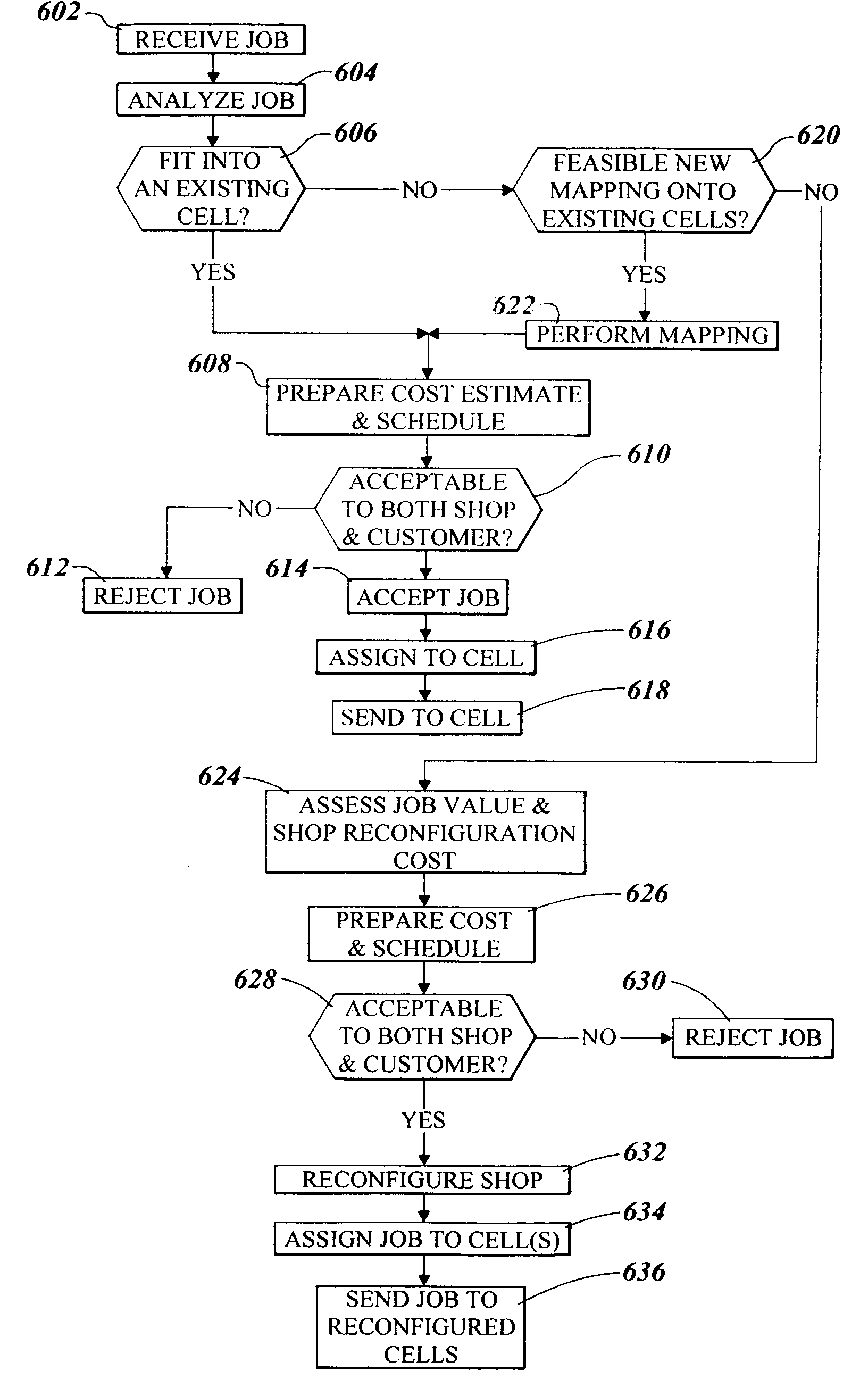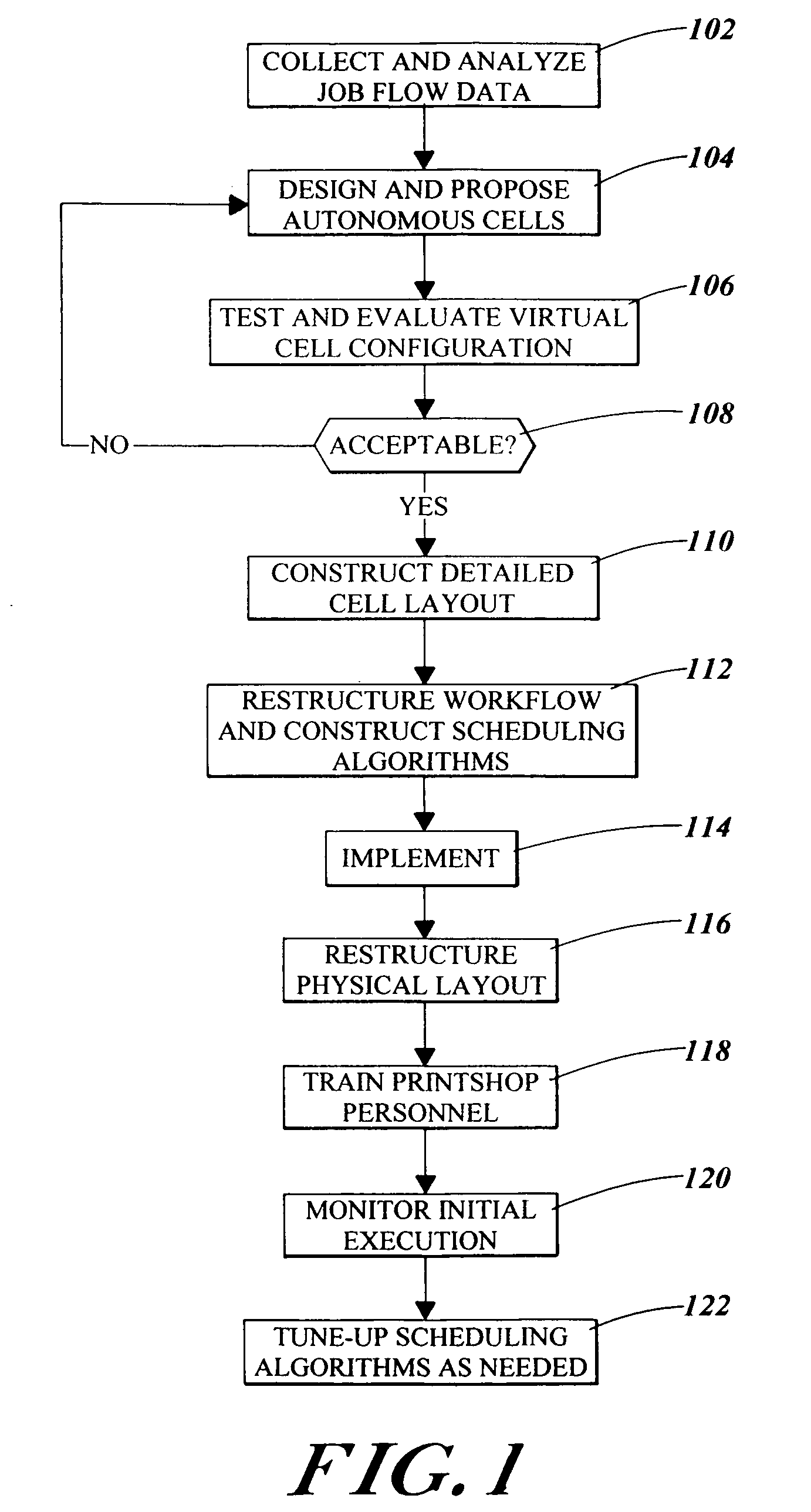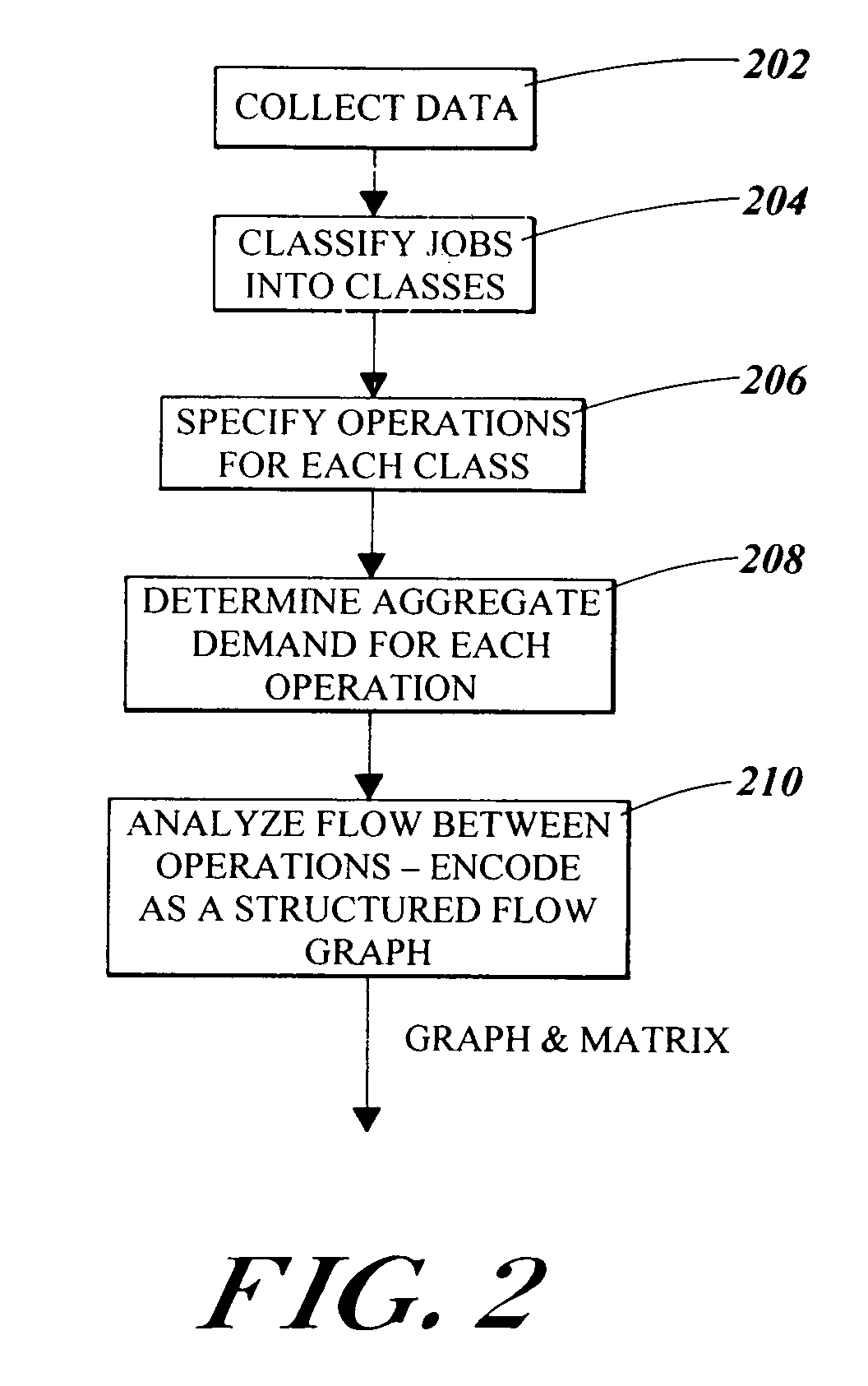Printshop resource optimization via the use of autonomous cells
a printshop and cell technology, applied in the printing field, can solve the problems of increased work-in-progress and inventory costs, significant time delays,
- Summary
- Abstract
- Description
- Claims
- Application Information
AI Technical Summary
Benefits of technology
Problems solved by technology
Method used
Image
Examples
Embodiment Construction
[0017]The illustrative embodiment of the present invention provides an approach to partitioning resources in a printshop efficiently so as to optimize performance of the printshop. Printshop resources, such as printers, copiers, cutters, shrinkwrappers and other varieties of equipment, are partitioned into autonomous cells. When a print job arrives, it is assigned to a particular autonomous cell for completion. Each autonomous cell may act independently from the other autonomous cells in processing a print job. Print jobs may be partitioned into smaller-sized lots that are concurrently processed by autonomous cells in order to optimize the efficiency and throughput of each autonomous cell. Moreover, multiple print jobs may be processed concurrently by an autonomous cell, and multiple print jobs may be executed concurrently by multiple autonomous cells in parallel.
[0018]Printshop resources are intelligently divided into autonomous cells. An analysis is made of print jobs that are typ...
PUM
 Login to View More
Login to View More Abstract
Description
Claims
Application Information
 Login to View More
Login to View More - R&D
- Intellectual Property
- Life Sciences
- Materials
- Tech Scout
- Unparalleled Data Quality
- Higher Quality Content
- 60% Fewer Hallucinations
Browse by: Latest US Patents, China's latest patents, Technical Efficacy Thesaurus, Application Domain, Technology Topic, Popular Technical Reports.
© 2025 PatSnap. All rights reserved.Legal|Privacy policy|Modern Slavery Act Transparency Statement|Sitemap|About US| Contact US: help@patsnap.com



